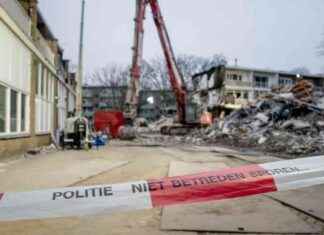Few musical tributes have been as touching as Debussy’s 1918 death. Falla was a close friend of Debussy and he wanted to pay tribute to his relative by reminding him of his work. Yesterday afternoon, Juan Carlos Garvayo addressed a short but intense recital at the Lorca Center, in which the Motril native and National Music Prize winner toured an era of creation for piano or arranged for piano, with deep roots in our own time, since ‘Entra el alba en la Alhambra’ was also re-released, a work by Mauricio Sotelo, commissioned from the Festival’s composer-in-residence composer from Madrid, by the National Center for Musical Diffusion, and published this same year.
Garvayo established a solid reputation decades ago as a privileged musician of 20th-century music. This requires sometimes going beyond the score and respecting the intent of its creator. So the repertoire he performed meant that he, to use a football term: play at home.
Last night’s recital was attended by just half of the audience in the Romanilla auditorium. It was a beautiful recital and a lesson in music. Garvayo, who is a pedagogical performer at the Royal Conservatory of Madrid, did not hesitate to use the opportunity after the execution of “Tribute to Debussy” to show how the French wrote “La Puerta del Vino”, the next work, after looking at the postcard Falla sent to him in sepia. He said graphically, “The French wrote about Spain to beat of the habanera.” Debussy didn’t ‘come’ to Granada. But the truth is, the broth did. Like the lovely ‘Lindaraja,’ that was originally composed for two pianos. Garvayo performed it emphasizing the most lyrical passages and whispering the transitions.
Technological advancements -now only the most classics use page turners- enabled Garvayo to perform in black and grey without losing any rubble from his score. He performed with a solemn, focused air on the same piano “something harse” that Rubinstein used to play the tribute to Dukas. Then he played ‘El llantofar del fauno’ which Dukas’s tribute after Debussy’s passing, a piece that is as dark and mysterious as it is beautiful.
Sotelo’s revival was a flamenco-like divertissement, with changes in tempo and sometimes vertiginous levels. It reminded me of the hustle of the day and the tranquility of dawn in the red castle. In the last phase of the recital Garvayo performed Joaquin Nin Castellanos’ tribute for ‘Claudio’ after his death -with a colonial smell of habanera, guajira – then Ernesto Halffter’s sparkling ‘L’espagnolade’. This was almost a compilation not only of music from the south but also of that from the north and Surinach’s ‘Three Spanish dances and songs’ to close.








